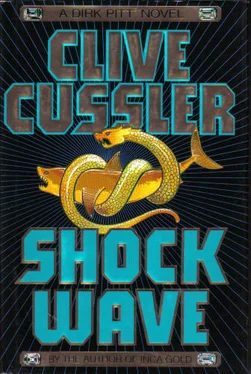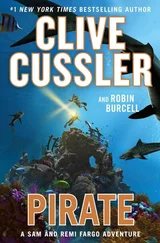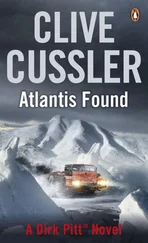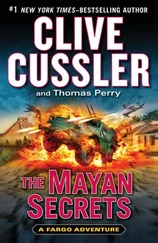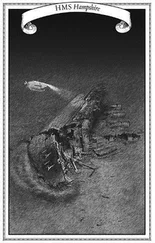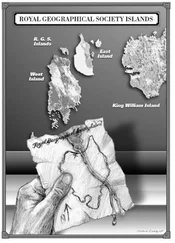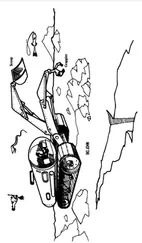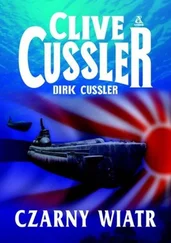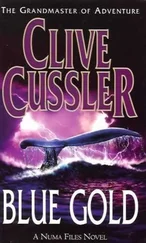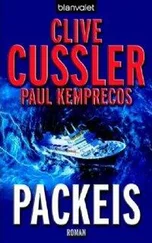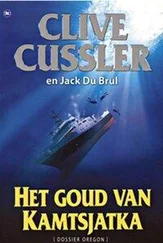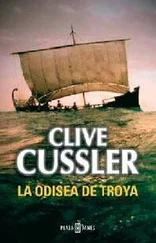Clive Cussler - Shock Wave
Здесь есть возможность читать онлайн «Clive Cussler - Shock Wave» весь текст электронной книги совершенно бесплатно (целиком полную версию без сокращений). В некоторых случаях можно слушать аудио, скачать через торрент в формате fb2 и присутствует краткое содержание. Год выпуска: 1996, ISBN: 1996, Издательство: Simon & Schuster, Жанр: Детектив, на английском языке. Описание произведения, (предисловие) а так же отзывы посетителей доступны на портале библиотеки ЛибКат.
- Название:Shock Wave
- Автор:
- Издательство:Simon & Schuster
- Жанр:
- Год:1996
- ISBN:978-0684802978
- Рейтинг книги:5 / 5. Голосов: 1
-
Избранное:Добавить в избранное
- Отзывы:
-
Ваша оценка:
- 100
- 1
- 2
- 3
- 4
- 5
Shock Wave: краткое содержание, описание и аннотация
Предлагаем к чтению аннотацию, описание, краткое содержание или предисловие (зависит от того, что написал сам автор книги «Shock Wave»). Если вы не нашли необходимую информацию о книге — напишите в комментариях, мы постараемся отыскать её.
Shock Wave — читать онлайн бесплатно полную книгу (весь текст) целиком
Ниже представлен текст книги, разбитый по страницам. Система сохранения места последней прочитанной страницы, позволяет с удобством читать онлайн бесплатно книгу «Shock Wave», без необходимости каждый раз заново искать на чём Вы остановились. Поставьте закладку, и сможете в любой момент перейти на страницу, на которой закончили чтение.
Интервал:
Закладка:
“There is something else to consider,” said Gunn. “The captain of the American container ship that found Mentawai reported a luxury yacht speeding from the site. He can’t swear to it in court, but he’s certain the yacht closed with Mentawai before he arrived, after responding to the freighter’s distress call. He also thinks the crew of the yacht are somehow responsible for the explosives that wiped out his boarding party.”
“Sounds like the good captain has an overactive imagination,” suggested Yaeger.
“To say this man is seeing demons is incorrect. Captain Jason Kelsey is a very responsible seaman with a solid history of skill and integrity.”
“Did he get a description of the yacht?” asked Pitt.
“By the time Kelsey concentrated his attention on it, the yacht was too distant to identify. His second officer, however, observed it earlier through binoculars before it widened the gap. Fortunately, he’s an amateur artist who enjoys sketching ships and boats while in port.”
“He drew a picture of it?”
“He admits to taking a few liberties. The yacht was pulling away from him, and his view was mostly of the stern quarter. But he managed to give us a good enough likeness to trace the hull design to her builders.”
Sandecker lit one of his cigars and nodded toward Giordino. “Al, why don’t you act as lead investigator on this one?”
Giordino slowly pulled out a cigar, the exact mate of Sandecker’s, and slowly rolled it between his thumb and fingers while warming one end with a wooden match. “I’ll get on the trail after a shower and a change of clothes.”
Giordino’s slinky method of pilfering the admiral’s private stock of cigars was a mystery that bewildered Sandecker. The cat-and-mouse game had gone on for years, with Sandecker unable to ferret out the secret and too proud to demand an answer from Giordino. What was particularly maddening to the admiral was that his inventory invariably failed to turn up a count of missing cigars.
Pitt was doodling on a notepad and spoke to Yaeger without looking up. “Suppose you tell me, Hiram. Did my idea of killer sound waves have any merit?”
“A great deal, as it turns out,” replied Yaeger. “The acoustics experts are still working out a detailed theory, but it looks as if we’re looking at a killer that travels through water and consists of several elements. There are multiple aspects to be examined. The first is a source for generating intense energy. The second, propagation, or how the energy travels from the source through the seas. Third, the target or structure that receives the acoustic energy. And fourth, the physiological effect on human and animal tissue.”
“Can you make a case for high-intensity sound waves that kill?” Pitt asked.
Yaeger shrugged. “We’re on shaky ground, but this is the best lead we have at the moment. The only joker in the deck is that sound waves intense enough to kill could not come from an ordinary sound source. And even an intense source could not kill at any great distance unless the sound was somehow focused.”
“Hard to believe that after traveling great distances through water a combination of high-intensity sound and excessive resonance energy can surface and kill every living thing within thirty or more kilometers.”
“Any idea where these sound rays originate?” asked Sandecker.
“Yes, as a matter of fact, we do.”
“Can one sound source actually cause such a staggering loss of life?” asked Gunn.
“No, and that’s the catch,” replied Yaeger. “To produce wholesale murder above and under the sea of the magnitude we’ve experienced, we have to be looking at several different sources on opposite sides of the ocean.” He paused, and shuffled through a stack of papers until he found the one he was looking for. Then he picked up a remote control and pressed a series of codes. Four green lights glowed on opposite corners of the holographic chart.
“By borrowing the global monitoring system of hydrophones placed by the Navy around the oceans to track the Soviet submarine fleet during the Cold War, we’ve managed to trace the source of the destructive sound waves to four different points in the Pacific Ocean.” Yaeger paused to pass printed copies of the chart to everyone seated at the table. “Number one, by far the strongest, appears to emanate from Gladiator Island, the exposed tip of a deep ocean range of volcanic mountains that surfaces midway between Tasmania and New Zealand’s South Island. Number two is almost on a direct line toward the Komandorskie Islands, off the Kamchatka Peninsula in the Bering Sea.”
“That’s a fair ways north,” observed Sandecker.
“Can’t imagine what the Russians have to gain,” said Gunn.
“Then we head east across the sea to Kunghit Island, off British Columbia, Canada, for number three,” Yaeger continued. “The final source as traced by a data pattern from the hydrophones is on the Isla de Pascua, or Easter Island as it is better known.”
“Making the shape of a trapezium,” commented Gunn.
Giordino straightened. “A what?”
“Trapezium, a quadrilateral with no two sides that are parallel.”
Pitt rose from the table and moved until he was almost standing inside the three-dimensional chart of the ocean. “A bit unusual for the acoustic sources to all stem from islands.” He turned and stared at Yaeger. “Are you sure of your data? There is no mistake, your electronic gear processed the tracking information from the hydrophone system correctly?”
Yaeger looked as though Pitt had stabbed him in the chest. “Our statistical analysis takes into account the acoustic network receptions and the alternative ray paths due to ocean variations.”
“I stand humbled.” Pitt bowed, making a gesture of apology. Then he asked, “Are the islands inhabited?”
Yaeger handed Pitt a small folder. “We’ve gleaned the usual encyclopedia of data on the islands. Geology, fauna, inhabitants. Gladiator Island is privately owned. The other three are leased from foreign governments for mineral exploration. These have to be considered forbidden zones.”
“How can sound be propagated such great distances underwater?” inquired Giordino.
“High-frequency sound is rapidly absorbed by salts in seawater, but low-frequency acoustic waves ignore the molecular structure of the salts, and their signals have been detected at ranges reaching thousands of kilometers. The next part of the scenario gets hazy. Somehow, in a manner we’ve yet to understand, the high-intensity, low-frequency rays, radiating from the various sources, surface and focus in what is known as a ‘convergence zone.’ It’s a phenomenon the scientists call ‘caustics.’”
“Like in caustic soda?” asked Giordino.
“No, like an envelope formed when the sound rays meet and converge.”
Sandecker held up a pair of reading spectacles to the light, checking for smudges. “And if we were all sitting on the deck of a ship that was in the middle of a convergence zone?”
“If struck by only one sound source,” explained Yaeger, “we’d hear a soft hum and maybe suffer from nothing more than a mild headache. But if four waves converged in the same region at the same time, multiplying the intensity, the structure of the ship would ring or vibrate and the sonic energy would cause enough internal organ damage to kill all of us within a matter of minutes.”
“Judging from the scattered sites of the disasters,” said Giordino grimly, “this thing can run amok and strike anywhere in the sea.”
“Or along shorelines,” Pitt added.
“We’re working on predicting where the ray channels converge,” Yaeger said, “but it’s difficult to come up with a set formula. For the moment, the best we can do is chart tides, currents, sea depths and water temperatures. They all can significantly alter the path of the sound rays.”
Читать дальшеИнтервал:
Закладка:
Похожие книги на «Shock Wave»
Представляем Вашему вниманию похожие книги на «Shock Wave» списком для выбора. Мы отобрали схожую по названию и смыслу литературу в надежде предоставить читателям больше вариантов отыскать новые, интересные, ещё непрочитанные произведения.
Обсуждение, отзывы о книге «Shock Wave» и просто собственные мнения читателей. Оставьте ваши комментарии, напишите, что Вы думаете о произведении, его смысле или главных героях. Укажите что конкретно понравилось, а что нет, и почему Вы так считаете.
